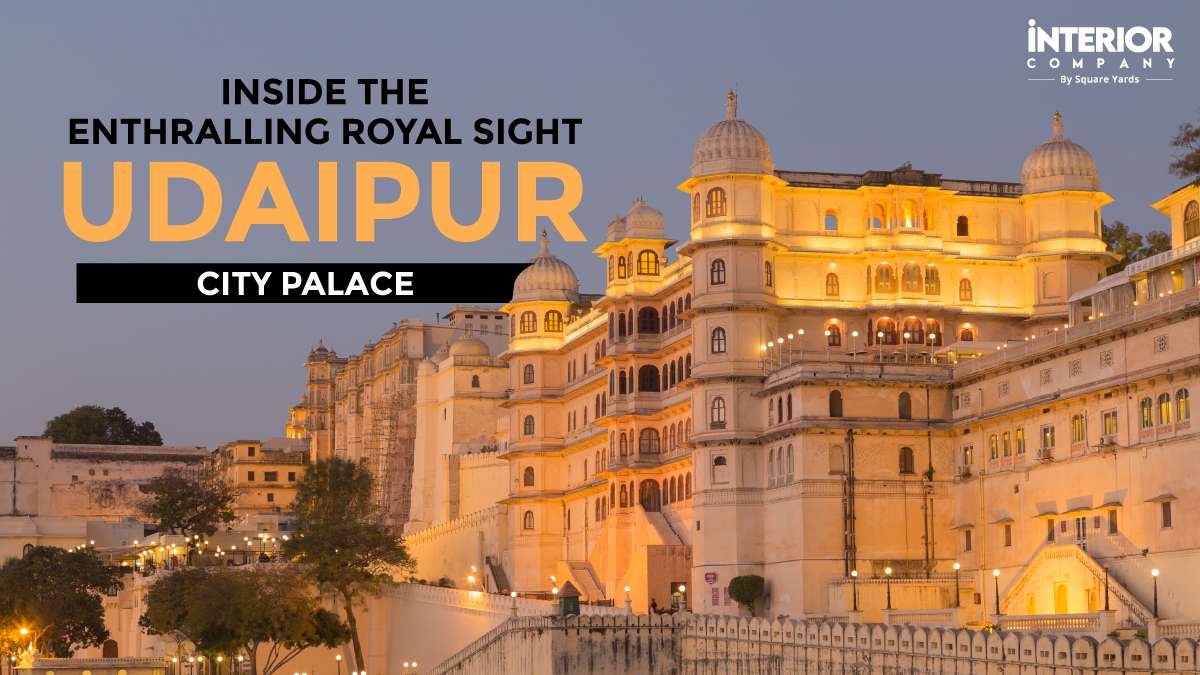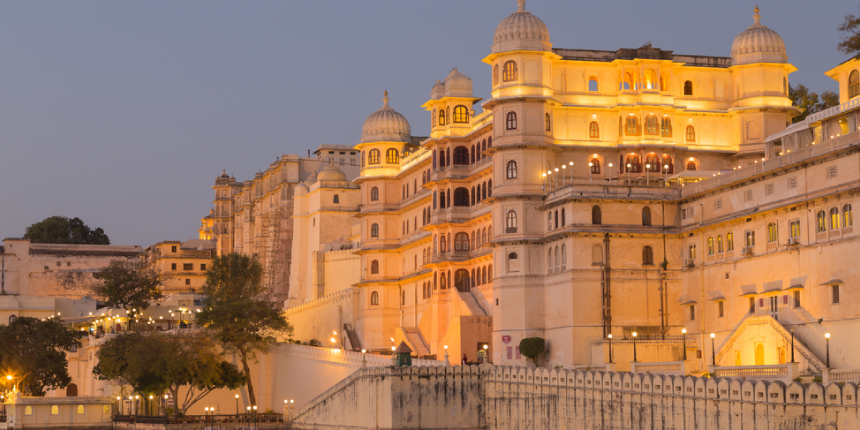
City Palace History
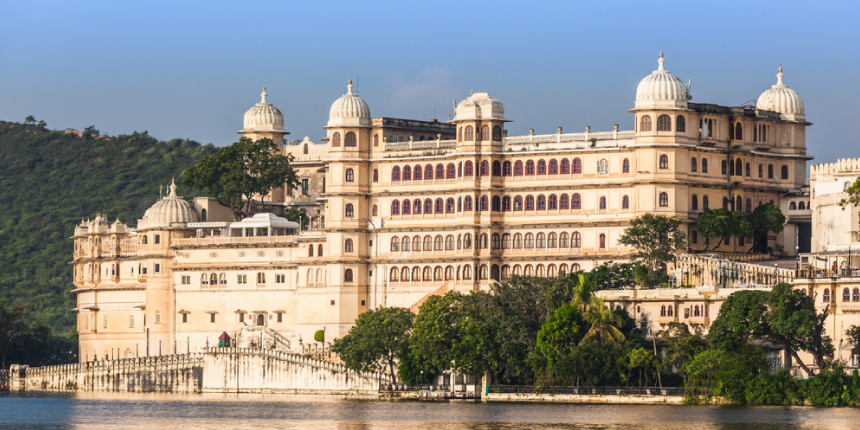
Rising from the banks of Lake Pichola, the striking City Palace is the largest royal complex in the state of Rajasthan. The construction of this magnum opus started in 1559 by Maharana Udai Singh II, and was carried on by his successors. Built over the course of 400 years, the complex is an amalgamation of palaces built by different rulers having diverse architectural styles and constituents from different parts of the world.
Presently Arvind Singh Mewar is the successor, residing here, in a part of the palace. However, the other structures and complexes of the palace are open to the public and overseen by the Maharana of Mewar Charitable Foundation.
Also Read: What is the Built-Up Area Meaning in Construction
City Palace Architecture
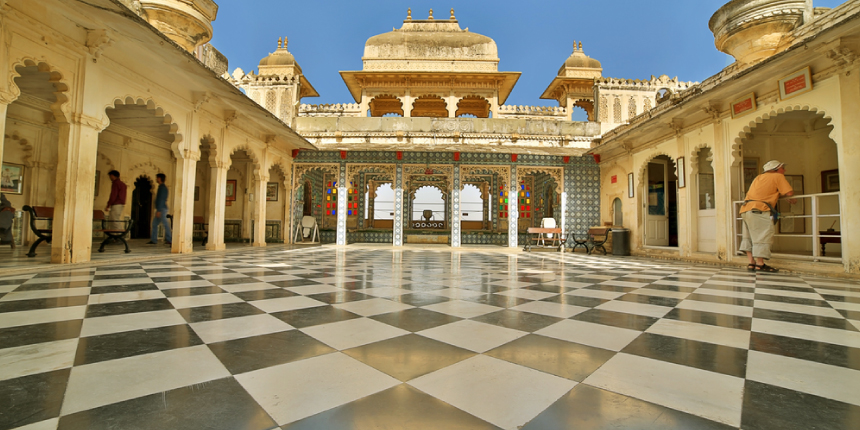
A conglomeration of 11 buildings with ornate towers, arched doorways, protruding, balconies and cupolas, the City Palace is a concoction of Rajasthani, Mughal, European and Oriental architecture. Encircled by fortifications the palace is built entirely of marble and granite. The main facade is 244 m long and 30.4 m high offering a breathtaking view of the city from its upper terraces. The exquisitely designed interiors include intricate mirror work, marble design, meticulous artwork, silverwork, inlay, and coloured glass. The 11 mini palaces inside are connected by corridors, chowks, and maze courtyards to evade any surprise attacks from the enemies. Today, the Udaipur City Palace is divided into major three parts – the first being the City Palace Museums which are open to the public, the second being the Heritage hotels- Fateh Prakash Palace and the third where the Mewar Royal Family still resides.
Let’s step inside into this architectural marvel and explore the cultural and social aspects of regal life.
Inside City Palace, Udaipur
View this post on Instagram
Source: Instagram
Let’s foray in some parts of Udaipur City Palace that one can’t miss:
The Looming Gateways
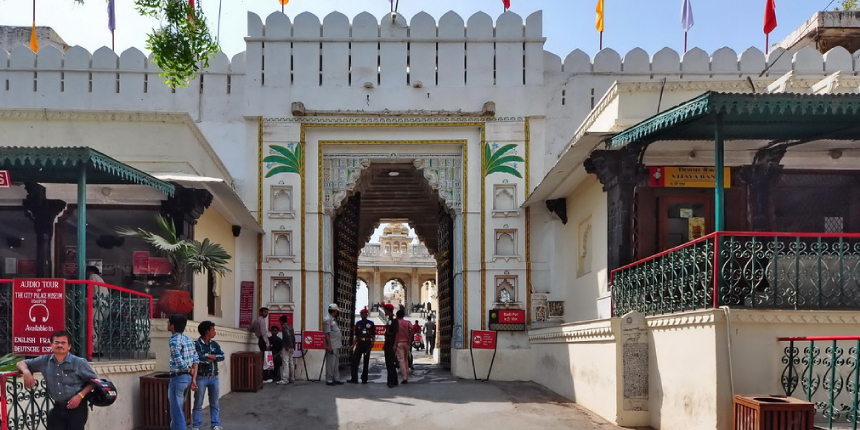
There are a number of massive gateways known as ‘pols’ that provide access to the palace complex. The entrance to the complex is through Badi Pol, which leads to the first courtyard, followed by the Tripola- a triple-arched gate. Between these two gates are eight marble arches, known as “torans”. Constructed by Rana Jagat Singh I, during the 16th century. It marks the spot where kings used to weigh themselves with gold and silver. Next to Tripola is the Elephant Gate or the Hathi Pol, where elephant fights were staged. All these gates were built during different timelines for specific reasons.
Also Check: Why Sustainable Construction is Important
The Badi Mahal

Badi Mahal known as the Garden Palace is the main building in the entire complex. The palace was built on 89 feet high natural rock, during the reign of Rana Amar Singh II in 1699. Inside, the palace is adorned with intricately carved pillars, and an enviable collection of rare paintings, antique furniture and stained glasswork. Due to its height, the palace provides magnificent views of the city and Lake Pichola. The palace was previously used on special occasions such as Holi, Diwali, and Dussehra and was inlay with light and colours, offering an enchanting view.
City Palace Museum

In 1974, a large part of the Udaipur City Palace was turned into a museum, known as the City Palace Museum which displays a remarkable collection of artefacts like miniature paintings, ancient sculptures, armoury, lithographs, curios, antiques, and inscriptions of the bygone era.
Pratap Kaksh

The Pratap Gallery is dedicated to the most iconic ruler of Mewar Maharana Pratap and his horse Chetak. It showcases the range of his artillery, including a display of his mammoth, the original armour of 25 kilograms and weapons used by the warrior during the great battle of Haldi Ghati in 1576.
Display Galleries
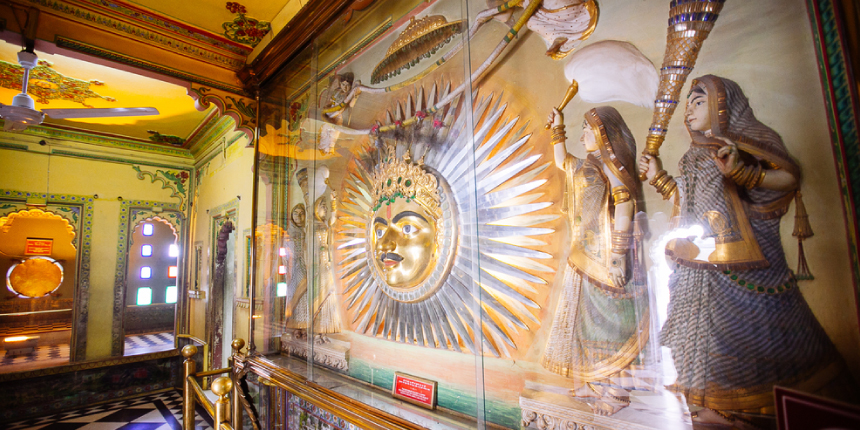
The Sculpture Gallery holds 308 sculptures in its vast collection that were once part of the thriving temples, while the Silver Gallery holds an expansive collection of silver items including a chariot to carry religious idols, a horse cart, and a mandap pavilion. used by the previous generations of the Mewar ruling family.
Mor Chowk
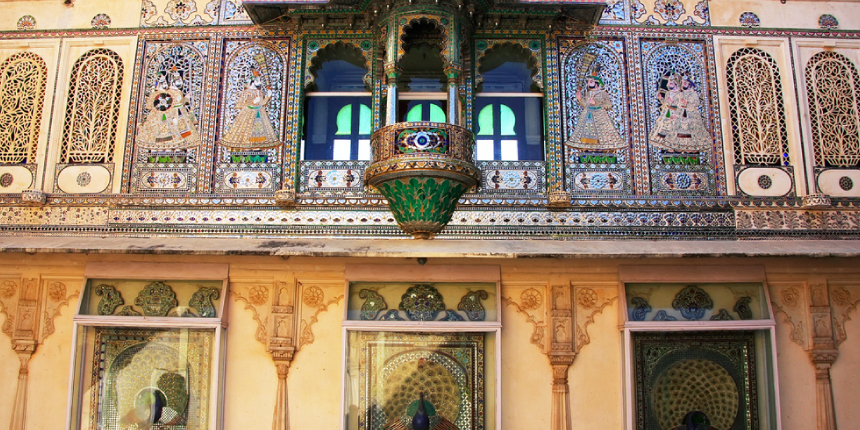
Mor Chowk (Peacock Courtyard) is the most highlighted place in the Udaipur City Palace Museum. It has been decorated with an eye-catching glass inlay that creates a mesmerising aura. The design of this splendid courtyard represents the three seasons – Monsoon, Summer and Winter. The chowk was used by the kings for private dinners and celebrations. The place was built by Maharana Sajjan Singh and is adorned with over 5000 mosaic pieces creating the work of art.
Zenana Mahal
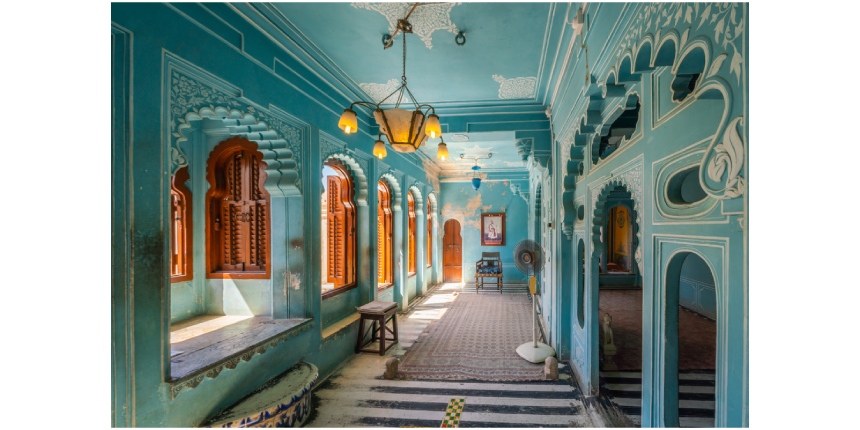
The City Palace museum is divided into a series of minor palaces, which were built from the 17th to the 20th century. Amongst them, the Zenana Mahal (palace for the royal ladies) holds the most significance. Featured in calming blues, and swings, the impressive Zenana Mahal interiors are hard to miss. It leads to Laxmi Niwas Chowk – a square courtyard used during special occasions and festivals. Presently, it is extensively used for weddings and important balls.
Moti Mahal
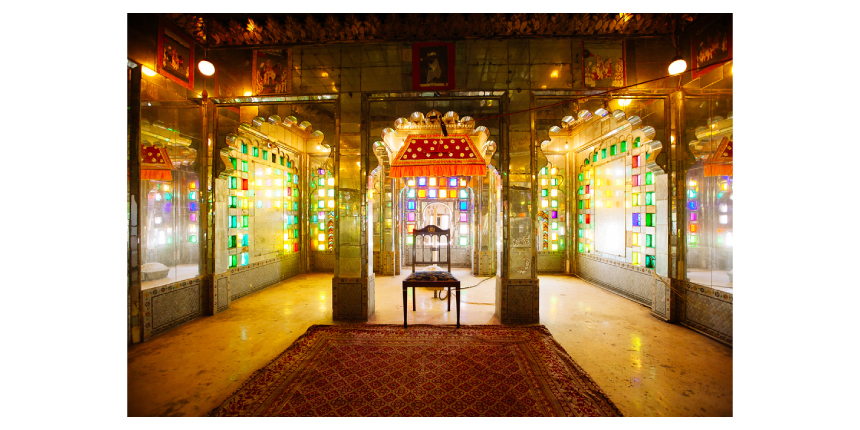
Moti Mahal in Udaipur City Palace is celebrated for its vibrant display of colours and lavish decor. This place was the private residence of the Maharanas – specifically Maharana Karan Singh. Some of the later rulers like Maharana Jawan Singhji added their own touch and decor to the same. you’ll find yourself surrounded by mirrored walls and stained glass windows. It creates an astonishing array of reflections.
Taj Fateh Prakash Palace Hotel
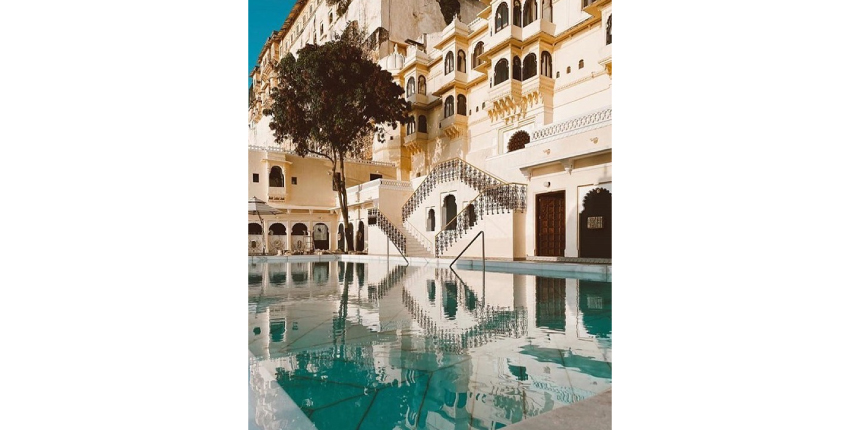
The Taj Fateh Prakash Palace Hotel is one of the heritage hotels in the Udaipur Palace Complex. Built by Maharana Fateh Singh in the early 20th century, the palace served as an exclusive venue for flamboyant royal functions, state banquets and wedding parties. The Mewar royal family preserved the legacy and continues to own the hotel. However, India’s luxurious chain of hotels, The Taj Group took over in January 2020, and revitalised it to match their immaculate standards.
The hotel is situated at the northern end of the City Place Complex, offering bewitching views of Lake Pichola, pearl-white Lake Palace and the charming Jag Mandir. The hotel is also spread over two wings and is an ode to Udaipur’s regal heritage.
Grand Interiors
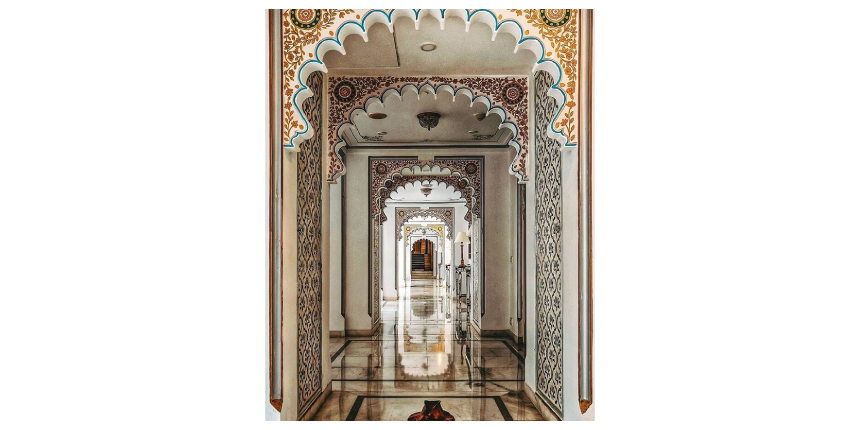
The hotel has sixty-five rooms (including suites) spread across two wings, the main palace building and the recently restored annexe- Dovecoat wing. The rooms have spectacular views of Lake Pichola. The palace-hotel houses royal artefacts, portraits, and crystal chandeliers, along with Persian carpets spread across marbled floors and antique furniture retrieved from royal toshakhanas.
View this post on Instagram
Source: Instagram
The Royal Durbar Hall
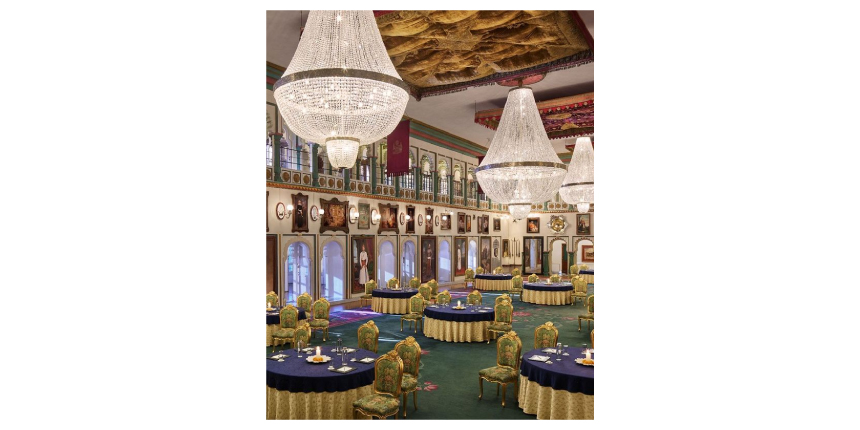
The start attraction of the palace hotel is the imposing Durbar Hall, which was used for royal functions and ornated with seven pendulous crystal chandeliers. The centrepiece is an exquisite one weighing a thousand kilograms, with the beauty that dominates the whole room. Two slightly smaller chandeliers, flank its sides weighing 800 kilograms each, while another four smaller chandeliers, weighing 200 kilograms each, glow in the corners of the hall.
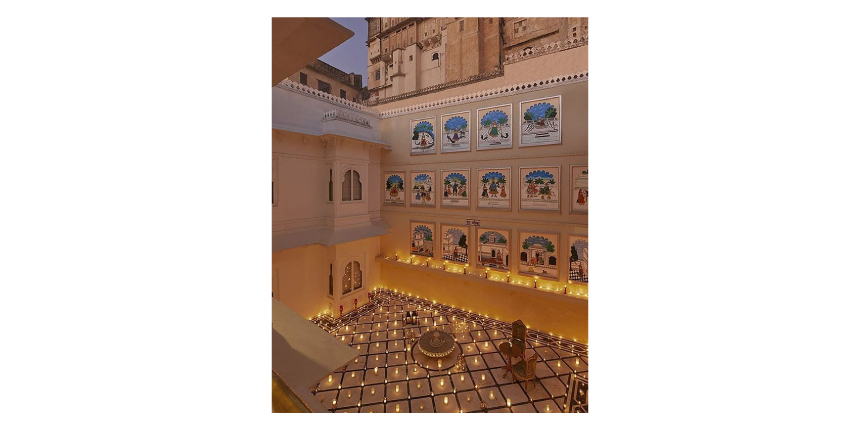
The walls are adorned with vintage weapons and grand portraits of the Maharanas of Mewar. The arched gallery above the hall once served as a viewing gallery, where the ladies of the court watch the proceedings in the hall.
Glittering Crystal Galleries
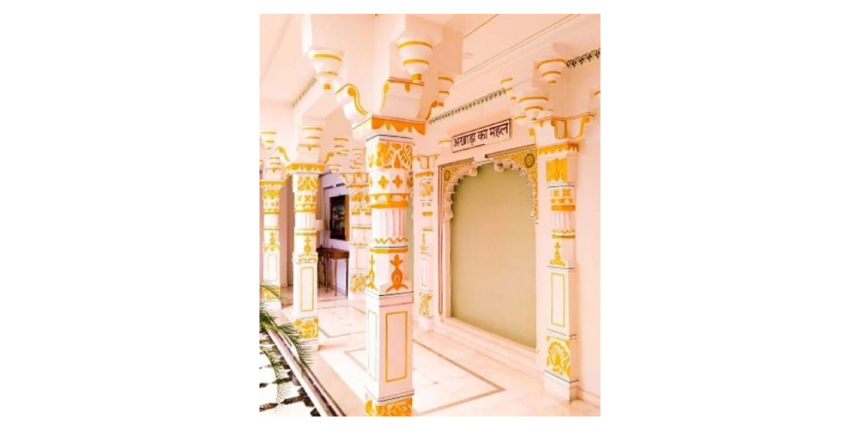
Today, the viewing gallery which overlooks the Durbar Hall has been converted into a Crystal Gallery with a staggering collection of crystals in the world. The custom-made collection of crystals was created by Birmingham-based F&C Osler and Company in 1877, during the reign of Maharana Sajjan Singh. However, was put on display only in 1994.
The extensive collection includes crystal tables, throne-like chairs, a sofa set, candle stands, decanters, and the only crystal bed in the world. A carpet woven with gold and silver threads graces the gallery.
Lesser-Known Facts
- The City Palace Udaipur was actually built on a plateau of about 600 m in height.
- The Udaipur Palace is the second largest palace in India, next to Mysore Palace and the largest palace in North India.
- City Palace Udaipur has a fascinating history it took almost 400 years to build with succeeding rulers making contributions to the completion of the palace.
- The paintings that adorn the walls are brimming with riveting details of the different eras- hunting escapades, durbar sessions, elephant fights, and battle scenes on the canvas that are visually captivating and seeks your imagination.
- Krishna Vilas flaunts a fabulous collection of miniature paintings portraying royal processions, festivals and games of the queens.
- The highest point of the Udaipur mahal is the Amar Villas Palace, featuring wonderful hanging gardens with fountains, towers and terraces
- The Udaipur Palace hotel has been home to royalty and a host of memorable moments.
- The picturesque location serves as a background for many feature films- Ye Jawanai hai Deewani, Guide, Goliyo ki Rasleela – Ram Leela, and many more.
City Palace Opening Times and Tickets
The Udaipur City Palace Timings- 9.30 a.m. to 5.30 p.m
Complex Entrance Fee: 30 Rupees
City Palace Entrance Fee (Adults): 300 Rupees
City Palace Entrance Fee (Children): 100 Rupees
In a Nutshell
Visiting the City Palace and experiencing its splendour is a rare sight for visitors to lose themselves amidst the colours of history, architecture, royal artefacts, tales of valour and visual delight. It will certainly leave a mark in the memory and will be an unforgettable experience for every travel enthusiast and history buff.
